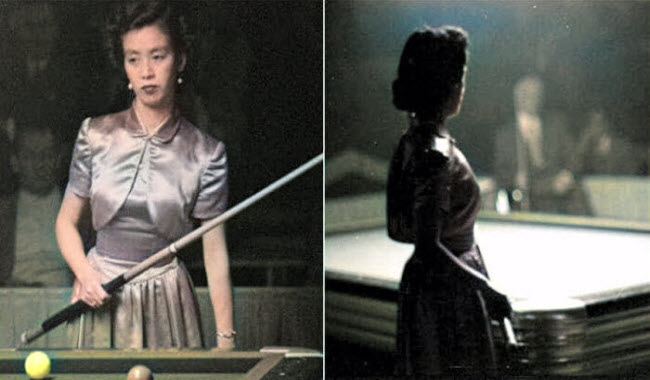Although there were no explicit barriers preventing women from playing billiards, the sport was historically dominated by men. However, the perception of billiards changed significantly with the emergence of Japanese player Masako Katsura. She challenged the status quo by winning numerous local and international titles. In the early 1950s, she became the first woman to compete in the World Championship, facing American champion Willie Hoppe. Her exceptional skills and youthful charm, coupled with her distinctive fashion sense, drew significant media attention and helped her earn the title of the “First Lady of Billiards.”
Early Life and Career:
Masako Katsura was born on March 7, 1917, in Tokyo, Japan. After her father’s death, she was raised by her mother, who encouraged her to take up billiards to help strengthen her physically and mentally. In the 1920s, billiard halls were common in Tokyo, and Katsura’s mother hoped that engaging in the sport would provide her daughter with beneficial exercise. Katsura’s natural talent and passion for the game quickly became apparent, leading her to work at a local billiard hall and practice daily. She became renowned for her skillful and deceptive shots.

At the age of fifteen, Katsura won the Women’s Straight Rail Championship. Her talent caught the attention of Kenri Matsuiyama, a Japanese billiard champion, who became her mentor. He taught her advanced techniques and the challenging three-cushion billiards style, which requires players to hit three cushions with the cue ball while striking two object balls. Despite the physical demands of the game, traditionally suited to men, Katsura compensated with her skill, intelligence, and finesse.

World War II and International Recognition:
The outbreak of World War II interrupted Katsura’s career, although she performed exhibitions for Japanese troops during the conflict. After Japan’s surrender following the atomic bombings of Hiroshima and Nagasaki, Katsura began giving exhibitions for American forces. This led to international recognition when an American soldier informed his father, Willie Cochrane, a champion in the U.S., that Katsura was superior to him. Encouraged by this endorsement, Cochrane invited Katsura to the United States. She had already won the National Women’s Billiards Championship and was competing in the National Men’s Championship. In 1951, Katsura moved to California, where she encountered a very different billiards scene compared to Tokyo. While women in Japan played in numerous billiard halls, in the U.S., these venues were predominantly male. Katsura noted that she had met only one other woman playing billiards in the U.S. and suggested that a women-only billiard hall would be a positive development.
Impact and Legacy:
During the 1950s, Katsura became a prominent figure in American billiards. Willie Cochrane, her manager, remarked, “The game needed a player skilled enough to compete with the greatest male players, and I am convinced that has finally happened.” The media began to focus on her, often highlighting her gender more than her skill. Despite this, male players respected her abilities. World champion Willie Hoppe, who held the title 51 times, praised Katsura, saying, “I was told she was good, but I never expected to see anything like this. She’s fantastic and will win her share of matches against the game’s best.” Although Katsura did not unseat Hoppe, her participation in the 1952 competition marked her as the first woman to compete in an international billiards championship.

As the years passed, Katsura broke down gender barriers in billiards and became a celebrated figure in the sport. In 1958, she appeared on television programs and continued to achieve high rankings until her retirement in 1961 after losing the World Championship title. Her manager, Cochrane, praised her contributions, saying, “Masako opened a new field for women and made the game appealing to them.” Katsura made her final public appearance in 1976 at a billiard hall in San Francisco. She played briefly before retiring again. By the 1970s, attitudes towards billiards in the U.S. had changed, with women gaining a foothold in the sport. A group of female players formed the Women’s Professional Billiard Association, and Katsura was inducted into their Hall of Fame. She returned to Japan, where she lived until her death in 1995, leaving behind a significant legacy in the history of billiards.
